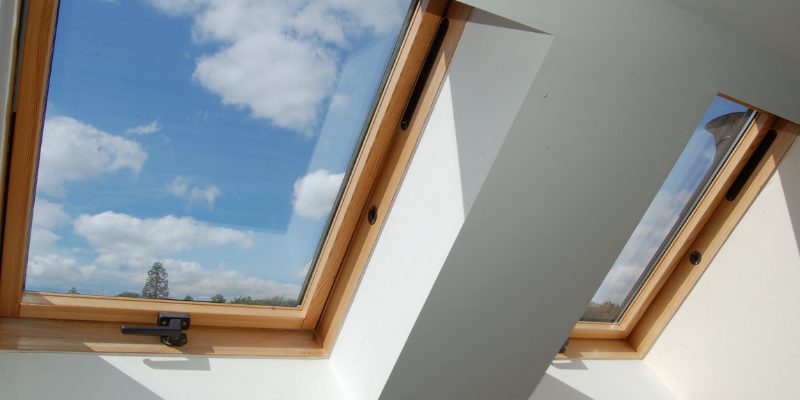Connect Now: 516-273-6428
Installing Skylights On Long Island Roofs

Skylights are a fantastic way to bring natural light into your home, enhance its aesthetic appeal, and even reduce energy costs.
However, installing skylights in Long Island’s unique climate requires careful planning and consideration. This guide will walk you through the benefits, types, installation process, and maintenance tips for skylights in Long Island, NY.
Benefits of Installing Skylights
Natural Light and Brightness
Skylights flood your home with natural light, creating a brighter, more inviting atmosphere:
Enhanced Lighting
Skylights provide abundant natural light, reducing the need for artificial lighting during the day.
Mood and Health Benefits
Exposure to natural light can improve mood, boost productivity, and contribute to overall well-being.
Energy Efficiency
Properly installed skylights can help you save on energy costs:
Reduced Lighting Costs
With more natural light, you can rely less on artificial lighting, leading to lower electricity bills.
Heating Benefits
Skylights can help warm your home during the winter months, especially useful in colder areas like Stony Brook and Northport.
Aesthetic Appeal
Skylights add a unique architectural feature to your home:
Visual Enhancement
Skylights can make your spaces look larger and more open, enhancing the overall aesthetic of your home.
Increased Property Value
Homes with well-designed skylights often have higher market value due to their enhanced appeal.
Ventilation and Air Quality
Some skylights offer ventilation options, improving air circulation:
Ventilating Skylights
These can be opened to allow fresh air in, helping to ventilate your home naturally and reduce indoor humidity.
Improved Indoor Air Quality
Better air circulation can improve indoor air quality and reduce the build-up of pollutants and moisture.
Types of Skylights for Long Island Homes
Choosing the right type of skylight is crucial for functionality and aesthetics:
Fixed Skylights
Fixed skylights do not open and are designed solely for bringing in light:
Best For
Rooms where additional natural light is needed but ventilation is not a concern, such as attics and stairwells.
Advantages
Simple design, usually more affordable and easier to install.
Ventilated Skylights
These skylights can be opened to provide ventilation:
Best For
Kitchens, bathrooms, and other areas where ventilation is beneficial.
Advantages
Combines natural light with improved air circulation, helping to manage humidity and fresh air.
Tubular Skylights
Tubular skylights are small, tube-shaped skylights that channel light from the roof to specific areas inside:
Best For
Small spaces or areas where a traditional skylight might not fit, such as hallways and closets.
Advantages
Compact design, easy to install, and highly effective at delivering light to focused areas.
Curb-Mounted Skylights
These skylights are mounted on a curb, a raised frame that provides additional height and stability:
Best For
Flat or low-slope roofs commonly found in Long Island’s contemporary homes.
Advantages
Provides better protection against water leakage, suitable for areas prone to heavy rain or snow.
Deck-Mounted Skylights
Deck-mounted skylights are installed flush with the roof for a low-profile look:
Best For
Homes with pitched roofs and a desire for a sleek, integrated appearance.
Advantages
Easier to install on sloped roofs, often provides a cleaner look with reduced risk of leaks.
Considerations for Skylight Installation on Long Island
Installing skylights on Long Island requires careful planning to address the region’s specific climate and environmental factors:
Weather and Climate
Long Island’s weather varies significantly throughout the year:
Winter Preparedness
Ensure skylights are well-insulated and have a low U-factor to prevent heat loss during cold winters, especially in northern areas like Huntington and Smithtown.
Hurricane Resilience
Choose impact-resistant skylights if you live in coastal areas like Montauk or Long Beach, which are more susceptible to hurricanes and strong winds.
Roof Type and Pitch
The type and pitch of your roof will influence the skylight installation process:
Flat and Low-Slope Roofs
Curb-mounted skylights are ideal for flat or low-slope roofs, providing better water management.
Pitched Roofs
Deck-mounted skylights work well with pitched roofs, offering a streamlined look and easy installation.
Placement and Orientation
The location and orientation of your skylights affect their performance:
South-Facing
Skylights facing south will provide the most light and heat, beneficial in colder months but may require shading in the summer.
North-Facing
North-facing skylights offer consistent, softer light, reducing the risk of overheating in the summer.
Optimal Placement
Consider the room’s layout and function when deciding where to place skylights. For instance, placing them in living rooms or kitchens can enhance lighting in these high-use areas.
Energy Efficiency
Choose energy-efficient skylights to optimize performance and savings:
Low-E Coatings
Skylights with low-emissivity (Low-E) coatings reduce heat gain and loss, improving energy efficiency.
Double or Triple Glazing
Multiple glazing layers provide better insulation and noise reduction, ideal for Long Island’s varying climate.
Skylight Installation Process
Professional Assessment
Start with a professional assessment to determine the best type and placement for your skylights:
Roof Inspection
A professional will inspect your roof to ensure it can support the installation and identify the best locations for skylights.
Design Consultation
Work with a roofing expert to choose skylights that match your home’s design and meet your lighting and ventilation needs.
Installation Steps
The installation process typically involves the following steps:
Preparation
The area where the skylight will be installed is measured and marked.
Cutting the Opening
A precise opening is cut in the roof, and the surrounding area is prepared for the skylight frame.
Installing the Skylight
The skylight is securely installed, ensuring it is properly sealed to prevent leaks.
Flashing and Sealing
Flashing is applied around the skylight to protect against water infiltration, and the installation is thoroughly sealed.
Interior Finishing
Inside the home, the skylight is finished with appropriate trim and paint to integrate it with the existing decor.
Post-Installation Check
After installation, perform a thorough check to ensure everything is in order:
Water Testing
Test for leaks by simulating rainfall or using a hose to check the skylight’s sealing.
Functional Test
If you have ventilated skylights, test the opening and closing mechanisms to ensure they work smoothly.
Inspection
A final inspection by the installer will confirm that the skylight is installed correctly and that all safety measures are met.
Skylight Maintenance Tips
Maintaining your skylights is essential to keep them functioning well and looking great:
Regular Cleaning
Keep your skylights clean to maximize light and maintain their appearance:
Exterior Cleaning
Clean the exterior glass regularly to remove dirt, debris, and any buildup that could block light.
Interior Cleaning
Wipe down the interior surfaces to keep them free of dust and smudges.
Inspect for Leaks and Damage
Regularly inspect your skylights for any signs of leaks or damage:
Check Seals and Flashing
Look for gaps or wear in the seals and flashing that could allow water to penetrate.
Inspect Glass and Frames
Ensure the glass and frames are free of cracks or other damage.
Maintenance of Ventilated Skylights
For skylights that open, ensure the mechanisms are working smoothly:
Lubricate Hinges
Apply lubricant to hinges and moving parts to keep them operating smoothly.
Check for Blockages
Make sure there are no obstructions that could prevent the skylight from opening or closing properly.
Seasonal Adjustments
Adjust your skylights according to the season:
Summer Shading
Use blinds or shades to control the amount of sunlight and heat entering through the skylight during the summer months.
Winter Insulation
Ensure that skylights are properly insulated to prevent heat loss during the winter.
Address:
11 Katie Ct, Lake Grove, NY 11755
Phone Number:
516-273-6428

Hours of Operation
Mon – Fri 8:00am – 8:00pm
Sat – Sun 8:00am – 6:00pm
